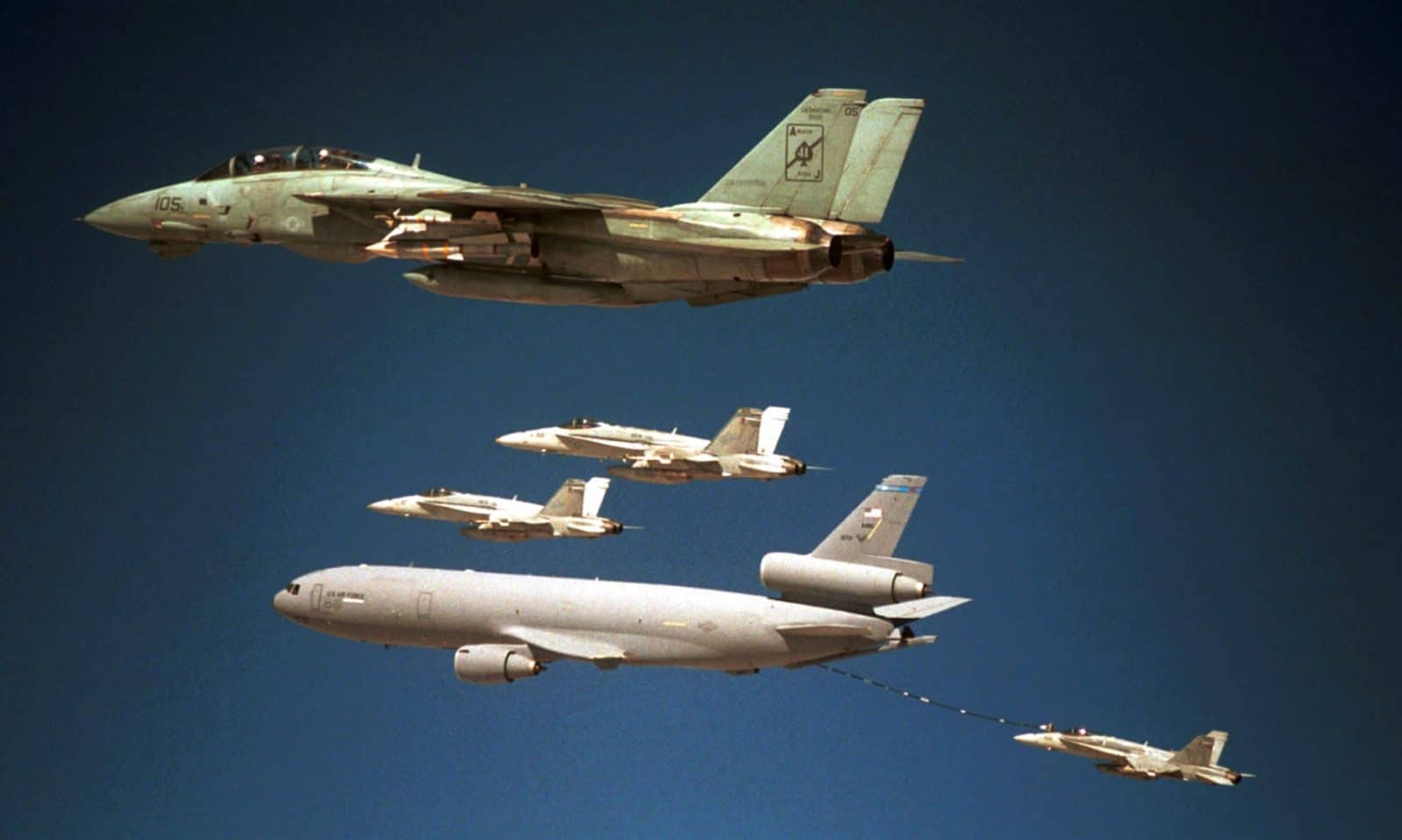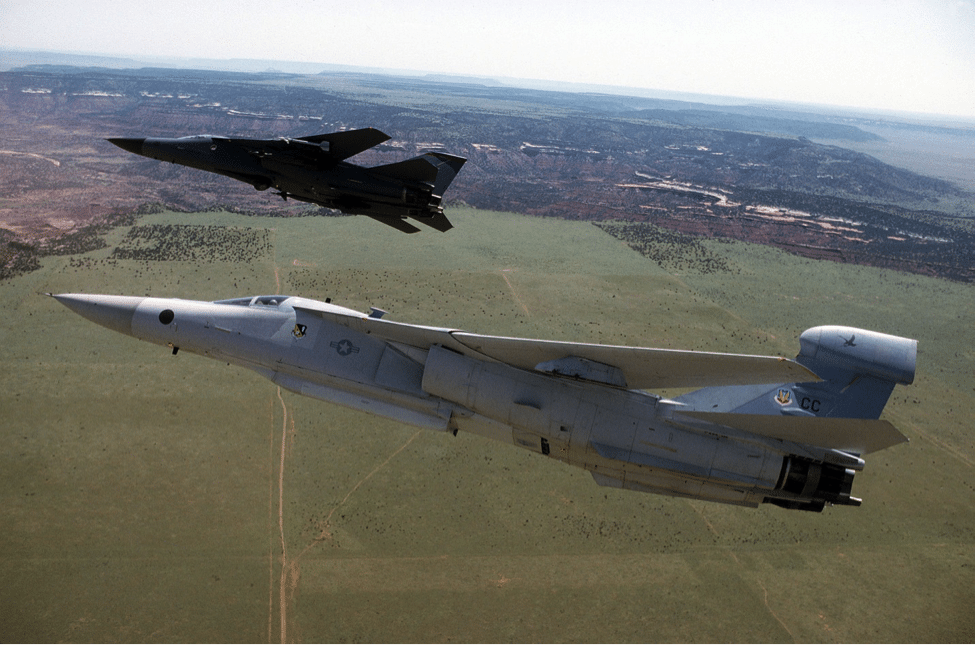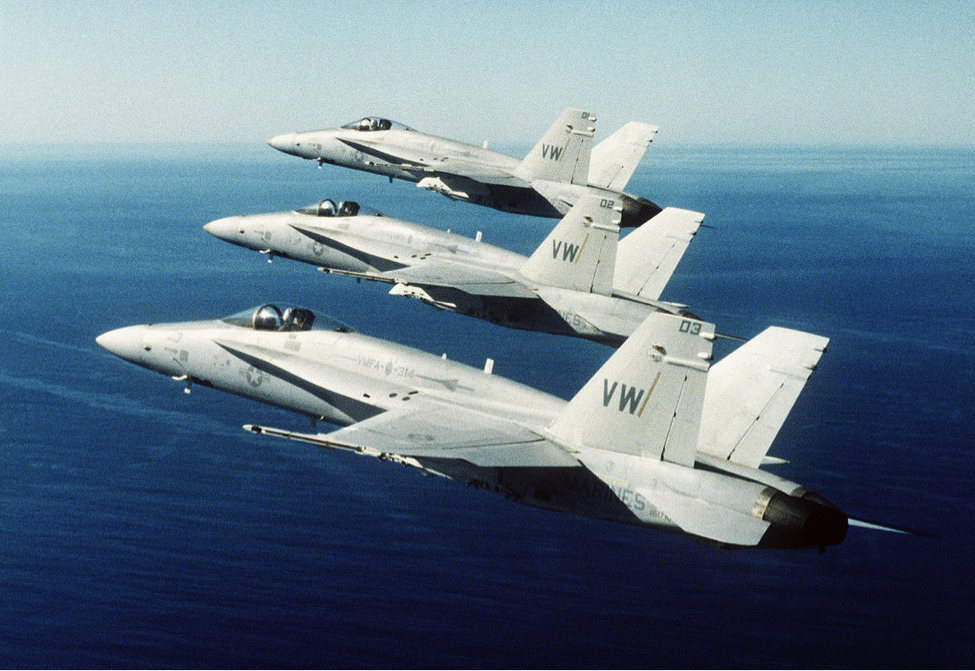Navy and Marine Corps Order of Battle
In the Mediterranean Sea aboard the aircraft carriers USS America (CVA-66) with Carrier Air Wing (CVW)-1 embarked and USS Coral Sea (CVA-43) with CVW-13 embarked, the Navy and Marines were preparing a strike of their own. Grumman A-6E Intruders, LTV A-7E Corsair IIs, McDonnell-Douglas (Boeing) F/A-18A Hornets, and Grumman EA-6B Prowlers were being prepared to hit their own targets. Grumman F-14A Tomcats and some other Hornets would provide combat air patrol (CAP) coverage over the aircraft carriers and their escorts and Grumman E-2C Hawkeyes would provide airborne early warning and control for the Navy and Marine aircraft as well as coordination of search and rescue (SAR) efforts. The Navy had already hit several Libyan coastal naval targets during March and early April. Overall mission command and control was provided by a modified USAF McDonnell Douglas KC-10A Extender aircraft.

Stealth Fighters Almost Got the Call to Action
Another little-known aspect of Operation El Dorado Canyon is that it was nearly the combat debut of the F-117A Stealth Fighter. By the time April of 1986 rolled around, about 30 F-117As had been produced and were operating out of the Nevada desert at Tonopah Test Range. Or maybe they weren’t. But very few people knew they existed at that time and rather than expose them to the not inconsiderable Libyan air defense network, manned by some 2,900 Soviet air-defense specialists, the Secretary of Defense decided to use the more conventional one-two punch of Air Force Aardvarks and a Navy Alpha Strike. Libya’s air defenses were nothing compared to the skies above Baghdad into which the F-117As ventured five years later, but when the air raid sirens started going off in Tripoli and Benghazi, the job got done. Mostly.
Specific Military Installations Targeted
Specifically targeted that April night were the Al Aziziyah Barracks in Tripoli and the Benghazi Military Barracks near Benghazi. Both barracks facilities were command and control centers for Libyan terror networks and bases for Gaddafi’s own Jamahiriyah Guard. Al Aziziyah also contained Gaddafi’s residence. The Benghazi Barracks also contained a warehouse full of MiG aircraft parts and components. Also targeted was the Murrat Side Bilal base, a Libyan naval training center used to educate terrorists in things like underwater sabotage and other water-borne dirty tricks. Two airfields were on the target list as well- Tripoli’s Okba Ben Nafi Air Base (formerly Wheelus US Air Force Base) where Soviet-built IL-76 Candid transports used to export Libyan arms and equipment to terrorists were based, and Benina Military Airfield near Benghazi, where Libyan MiG and Sukhoi fighter aircraft were based. Benina was also a former American base.
Going In Hot
Just before 0200 the F-111Fs split up into three flights of six aircraft using the call signs Remit, Elton, and Karma. Then they went to work. The attack lasted all of 13 minutes from feet dry (over land) to feet wet (back over the Med). The bombers deposited 60 tons of bombs on their targets. Due to the late hour civilian casualties on the ground were minimal, but inevitably some bombs missed their targets- creating a diplomatic stir but again minimal casualties. Ironically one of the bombs that missed its target nearly destroyed the French embassy. Which target was that bomb supposed to hit anyway? The Navy and Marine aircraft executed Iron Hand defense suppression missions, destroying Libyan air defense radar and surface-to-air missile (SAM) sites with Shrike and HARM anti-radar missiles and jamming their signals and communications with the Prowlers before working over the Benghazi targets. Confirmed destroyed at Benina were four MiG-23 Flogger fighters, two Mil-8 Hip helicopters, and two Fokker F27 transports. Gaddafi’s transport capability was cut back somewhat with several of the IL-76 Candid transports at Okba Ben Nafi Air Base destroyed or damaged.



